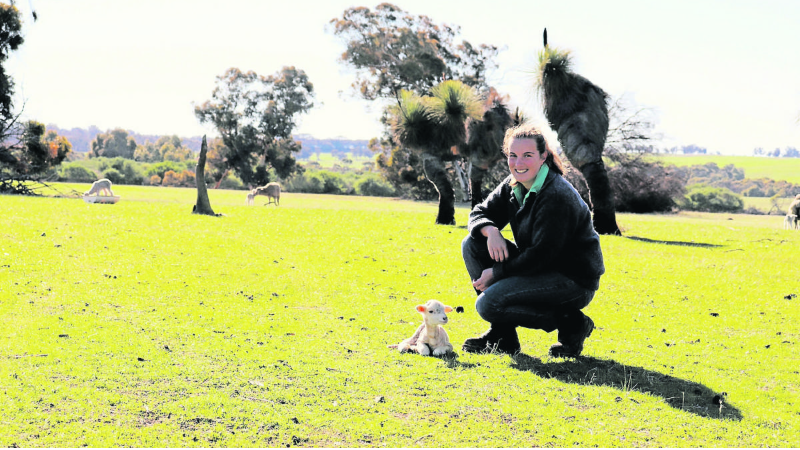On farm 21-day joining trial a success
TRIALLING new things is part of the program for sheep producer Clayton South, Wagin.
This season Mr South, along with leading livestock hand Kelly Gorter, decided to try a 21-day joining program with a mob of their Dohne ewes, after seeing some positive results over the past few years since coming back to a 28-day period from 30 days and before that a more traditional 35-day joining.
Ms Gorter said the mob of 650 red and blue tag Dohne ewes, which had all scanned with twins last year, identified by the records made using their electronic tags, were mated to Dohne rams at two per cent for just 21 days and the results were “pleasing”.
“We’d been scanning about 3-5 per cent drys for the oldest age groups of ewes at 28 days so we budgeted on having 10-15pc dry’s for the 21-day joining,” Ms Gorter said.
“So to have only 9pc was a good result.”
In preparation for joining the ewes were “lupin flushed” with 500 grams of lupins per head, per day, for 10 days before the rams went in and for three days after.
Ewes were in condition score 3.3-3.5 when they were joined on 150 hectares of wheat stubble with chaff piles.
Rams went in on January 22 without the use of any ‘teasers’.
Of the 650 ewes joined, 58 scanned with triplets, 424 with twins, 109 with singles and 58 were dry, giving a scanning percentage of 174pc.
“I’m happy with the results of our first trial of 21-day joining,” Mr South said.
Despite being managed exactly the same as the rest of the flock leading up to joining, the younger mob of last year’s twin-bearing ewes (black and white tags) were down a little on other years and only scanned 153pc, but still a pleasing result.
Their maiden ewes (orange tags) scanned at 120pc.
The Souths also get their pregnancy scanner Mark Edwards, of Albany, to identify early and late conceived foetuses at scanning.
Mr Edwards uses a combination of foetal size and development to identify if lambs were conceived in the first or second half of joining, allowing the Souths to better target nutrition, management and husbandry procedures for the ewes and their lambs.
The three-week joining mob were identified by Mr Edwards as either being conceived in the first 14 days or last seven days.
This foetal age and litter size data was recorded against the ewe’s EID tags by Ms Gorter, who offers these services through her business KG Livestock Services, using a software program and auto-record board.
“We find the auto record board system of recording works well for us and doesn’t hold Mark up at all with his scanning,” Ms Gorter said.
“Mark now has the equipment on his crate to be able to record this data for us so we may look at doing that next year instead.”
Ms Gorter helps Mr South and other farmers around WA to collect data like this, as well as offering advice on how to implement the electronic tags and the benefits that come from measuring and recording individual animal data.
When asked whether he would attempt a three-week joining again next year, Mr South said if the conditions were right he most likely will, but perhaps not for the whole adult ewe flock quite yet.
“It’s definitely got a fit with the oldest age groups and a nice tight joining help with management around the cropping program,” he said.
“We’re already planning on doing something different next year, I get bored doing the same things year-in, year-out, but it’s also about improving the system to make it more productive or more efficient.
“It’s not just change for change’s sake.”
They are due to start lambing in a couple of weeks so the focus has shifted to targeted ewe nutrition, giving each ewe exactly what she requires in terms of her time of lambing and pregnancy status.
The most important part of the operation is lamb survival.
“There’s no point having a good scanning percentage if we don’t manage the ewes to keep the majority of lambs alive,” Ms Gorter said.
“With a focus on lamb production (lambs per hectare), the aim is to produce as many lambs as possible with a system that is precise, efficient and fits in with the cropping operation as well.”

Kelly Gorter, KG Livestock Services, with a lamb from last year’s drop at Wagin.










 Facebook
Facebook YouTube
YouTube Instagram
Instagram